Photography courtesy of Lowell Washburn, all rights reserved.
A Day With The Swans
In Iowa’s North Zone, the goose season runs until January 7. And although winter weather fronts were causing goose numbers to rapidly dwindle, I decided to keep hunting until the last birds had moved south.
For today’s hunt I had chosen a snow-covered, corn field a couple of miles from Clear Lake. The harvested field had been ‘speed ripped’, an erosion reducing management practice which leaves plenty of chopped stalks and waste grain lying on the surface. After placing a group of full bodied goose decoys near the center of the field, I donned my whites and settled into the middle of the spread for what I hoped would prove to be a honker appealing location.
It soon began snowing, but a rising breeze was sufficient to keep the decoys clean. So far, so good. But then, as the snow flurries continued, a dense fog suddenly set in. Although visibility had become extremely limited, the sudden ‘special effects’ provided an unusually dramatic backdrop for a late season hunt.
With the stage set, the only thing missing from my goose hunt were the geese. Following an hour and a half of lying in the fog covered field, I realized that my chances for success were diminishing. By now, feeding honkers should have been on the wing. Ordinarily, my decoys would have been visible to passing flocks for a mile or more. But under the current conditions, they were probably invisible to anything more than a couple of hundred yards distant.
The dense fog eventually dissolved into what could be best described as a persistent haze. But visibility had improved, and the flurries soon abated. It was about that time that I heard the unmistakable clamor of approaching waterfowl. But the alert didn’t come from an incoming flock of Canada geese. Instead, it was the distinctive, baritone calling of trumpeter swans.
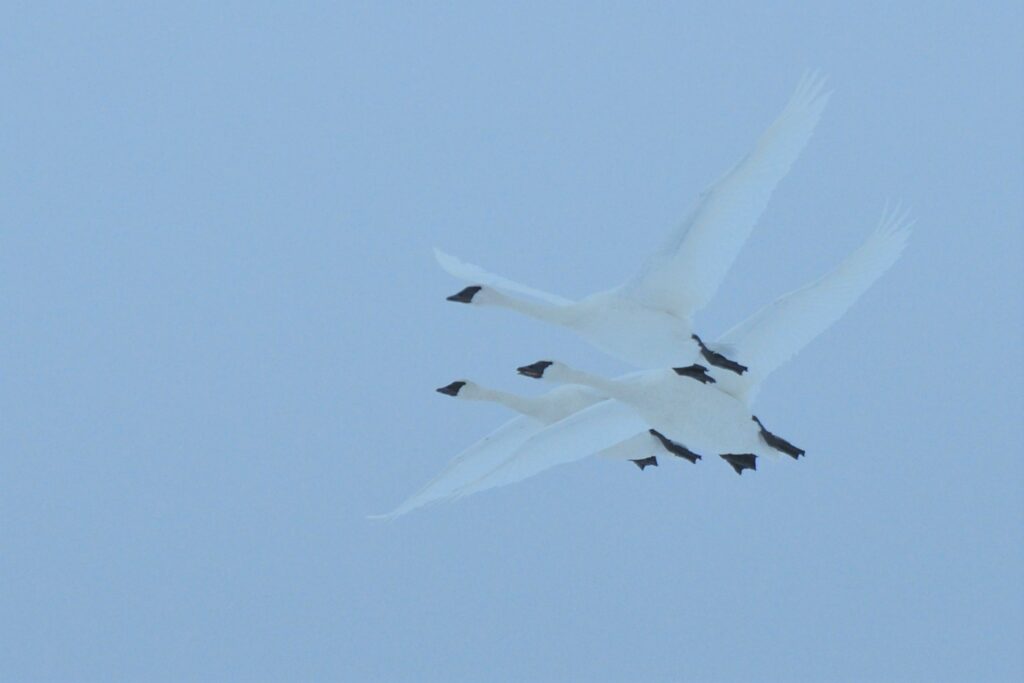
With adults occasionally weighing in excess of 35 pounds, trumpeter swans are our largest waterfowl. Although historically listed as a common wetland nester, trumpeters entirely disappeared from Iowa as advanced settlement and wetland drainage swept the state. Today, thanks largely to an aggressive restoration project spearheaded by retired DNR Wildlife Biologist, Ronald Andrews, trumpeter swans are once again thriving in Iowa marshlands.
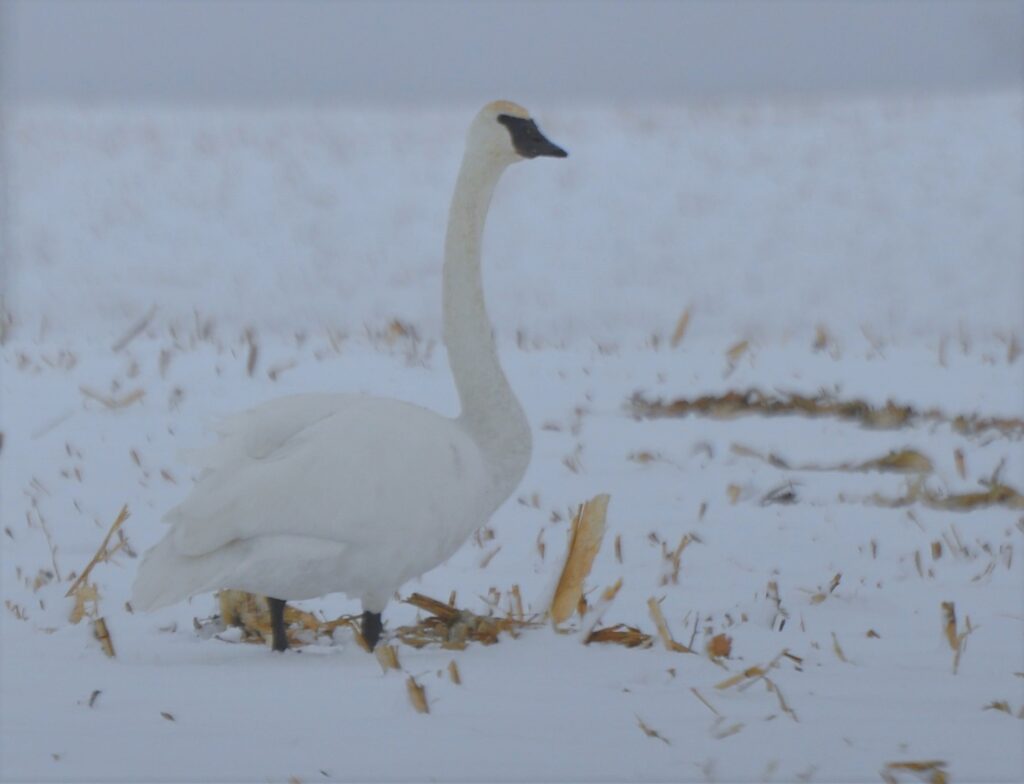
Seeing and hearing swans is always a thrill, and the incoming flock proved no exception. The mixed group contained four snow white adults and three dusky, young-of-the-year cygnets. Spotting my decoys, the swans turned in my direction. Maybe they thought that my tightly grouped honkers had discovered an unusually rich supply of waste grain or that maybe the wary Canadas offered a measure of enhanced security. For whatever the reason, the swans lowered their landing gear and touched down without hesitation.
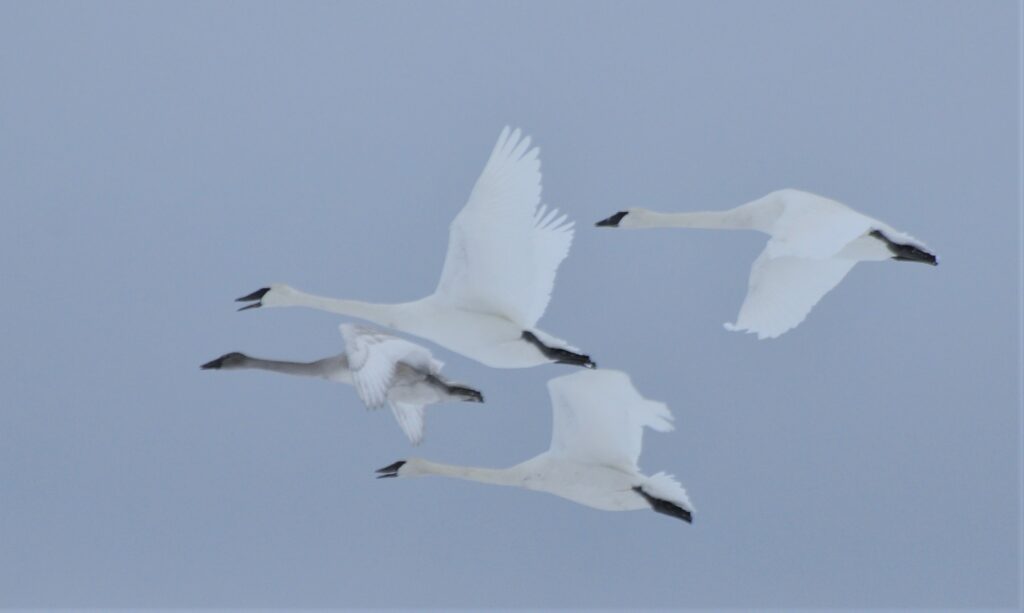
The long-necked fowl were obviously hungry and lost no time in digging through the stalks for spilled grain. Swans are aggressive feeders, raking away large patches of frozen cornstalks while creating obvious piles of exposed vegetation. In snow covered fields, these “digs” are highly visible to airborne wildlife. In addition to attracting additional trumpeters, swan digs also get the attention of Canada geese and mallard ducks. Within minutes of their arrival, the swans had already created several digs which may have been at least partially responsible for the flocks of mallard ducks which began to circle my goose decoys. Unfortunately for me, the duck season had closed during the first week of December.
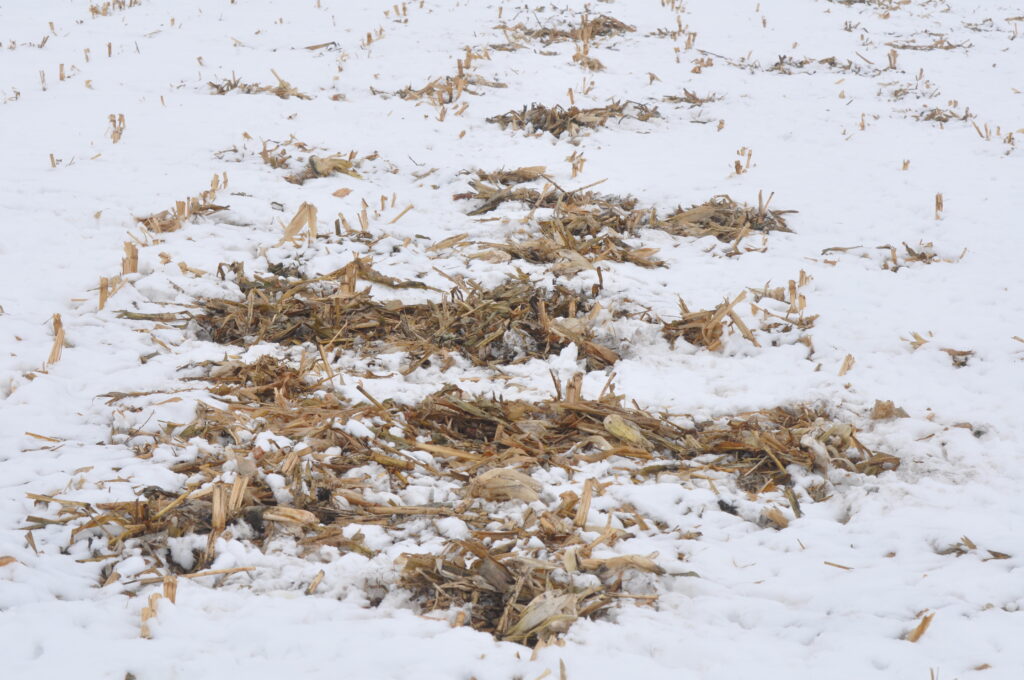
Although swan trumpeting may seem similar in volume to the honking of Canada geese, the vocalizations can be heard for extraordinary distances by other swans. Consequently, the sound of the swans feeding downrange of my decoys began to attract more and more white visitors. The combined clamor gained a noticeable increase in volume as each new arrival was enthusiastically greeted by swans already on the ground.
By the time another hour had passed, my decoys had become surrounded on two sides by an incredible gathering of 47 magnificent swans. The closest birds were just yards away. Visibility remained marginal and I could hear approaching birds long before I could see them through the gloom. As the flocks drew near, the first thing my eyes would detect were the swans’ jet-black bills and legs with the snow-white wings, necks, and bodies taking shape a couple of seconds later. It was an eerie sight to be sure. Even though the detail killing haze refused to dissipate, I decided to dig out my camera and attempt some white-on-white swan photos. Although the resulting pics aren’t likely to make the cover of National Geographic anytime soon, the shots of birds flying through the gloomy atmosphere did have a uniquely filtered quality that seemed to compliment the hazy weirdness of the winter sky.

The geese remained a no show, and I finally packed it in just before sunset. Although I never saw a single goose, I later discovered that several hundred Canadas had fed about three miles to the east from where I sat. Although no shots were fired, the hours-long, close observation of all those trumpeter swans had made my day. So much so, that I consider the outing to be one of my best hunts of the season.
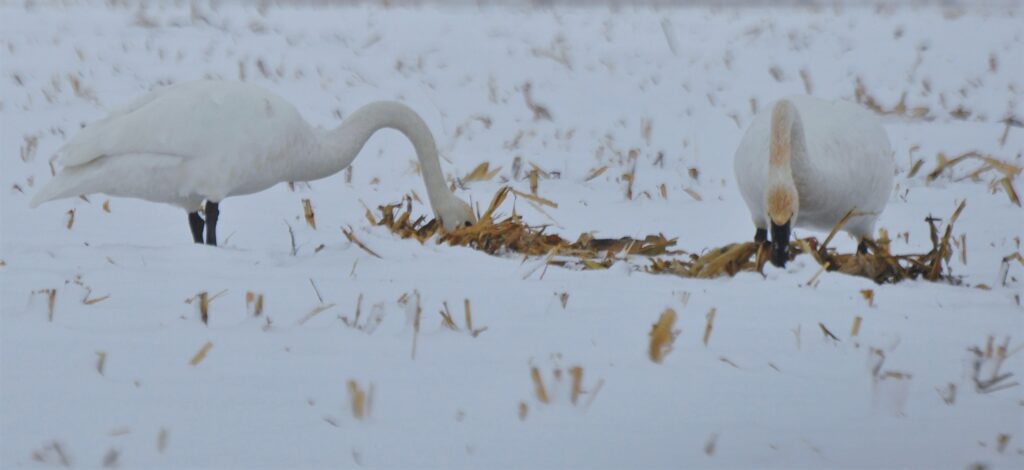

 Tom Cope
Tom Cope Sue Wilkinson
Sue Wilkinson Susan Judkins Josten
Susan Judkins Josten Rudi Roeslein
Rudi Roeslein Elyssa McFarland
Elyssa McFarland Mark Langgin
Mark Langgin Adam Janke
Adam Janke Joe Henry
Joe Henry Kristin Ashenbrenner
Kristin Ashenbrenner Joe Wilkinson
Joe Wilkinson Dr. Tammy Mildenstein
Dr. Tammy Mildenstein Sean McMahon
Sean McMahon